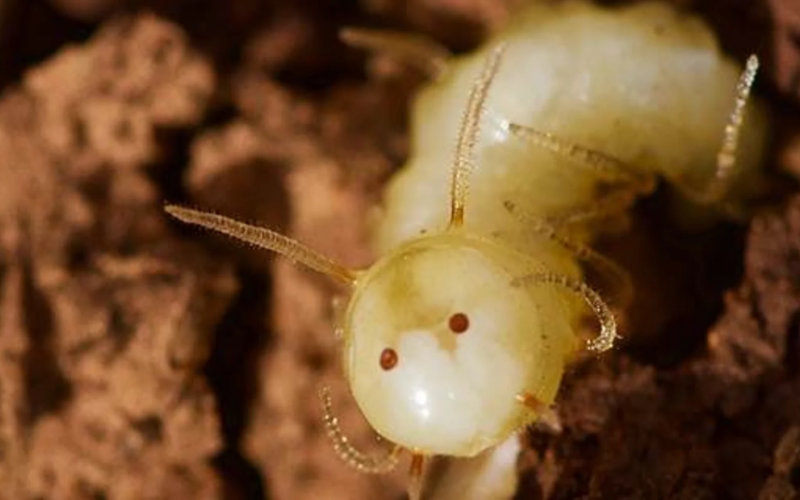New Fly Species Mimics Termites to Infiltrate Colonies in Morocco

A study conducted in the Anti-Atlas mountain ranges of Morocco on the evolution of flies and the adaptations of termite-related species reveals the existence of fly larvae that have the ability to take on the appearance of termites to live in termite mounds.
The study, published in Current Biology, was conducted by the Institute of Evolutionary Biology (IBE), a joint center of the Spanish National Research Council (CSIC) and the Pompeu Fabra University (UPF), in collaboration with the Botanical Institute of Barcelona (IBB, CSIC-CMCNB). It led to the discovery of a species of blue fly (family Calliphoridae) whose larvae integrate into the colonies of terrestrial termites.
"It was a fortuitous discovery. [...] By lifting a stone, we found a termite mound with three fly larvae that we had never seen before. The water had probably flooded the deep layers of the nest and the larvae had emerged to the surface," explains Roger Vila, the researcher who led the study, to La Razon, stressing that "it must be an extremely rare species, because we have carried out three other expeditions in this region and, although we have lifted hundreds of stones, we have only found two other flies, together in another termite mound".
These larvae have the ability to change appearance and resemble termites. On the back of the body, the larva presents a false head with antennae, palps and eyes. "Most termites live meters deep and have no visual perception. However, the foraging termites come out at dusk to collect grass, and have functional eyes that the larvae can imitate with their spiracles," Vila explains, indicating that these larvae "are indistinguishable from the termites of the colony in which they live".
"The larvae we studied ultimately died without reaching metamorphosis, so there could be elements of the nest and the symbiotic relationship between termites and flies that we were unable to transfer to the laboratory. Their diet is unknown to date, and their adult form remains a mystery," added the principal researcher of the study, noting that "the common ancestor of the blue fly and the humpbacked fly dates back more than 150 million years" and that the discovered larvae belong to the "Rhyncomya genus".
Related Articles
-

Tax Crackdown Rocks Morocco’s Real Estate: Developers Face Audits Over Cash Schemes
7 September 2025
-

Morocco’s $38 Billion Infrastructure Overhaul: Paving the Way for Regional Dominance
7 September 2025
-

Morocco Cracks Down on Illegal Construction: Major Cities Face Scrutiny Amid Urban Planning Scandal
6 September 2025
-

Moroccan Police Bust International Phone Theft Ring: France-Morocco Sting Recovers Stolen Devices
6 September 2025
-

US Reaffirms Support for Moroccan Sovereignty in Western Sahara Dispute
6 September 2025